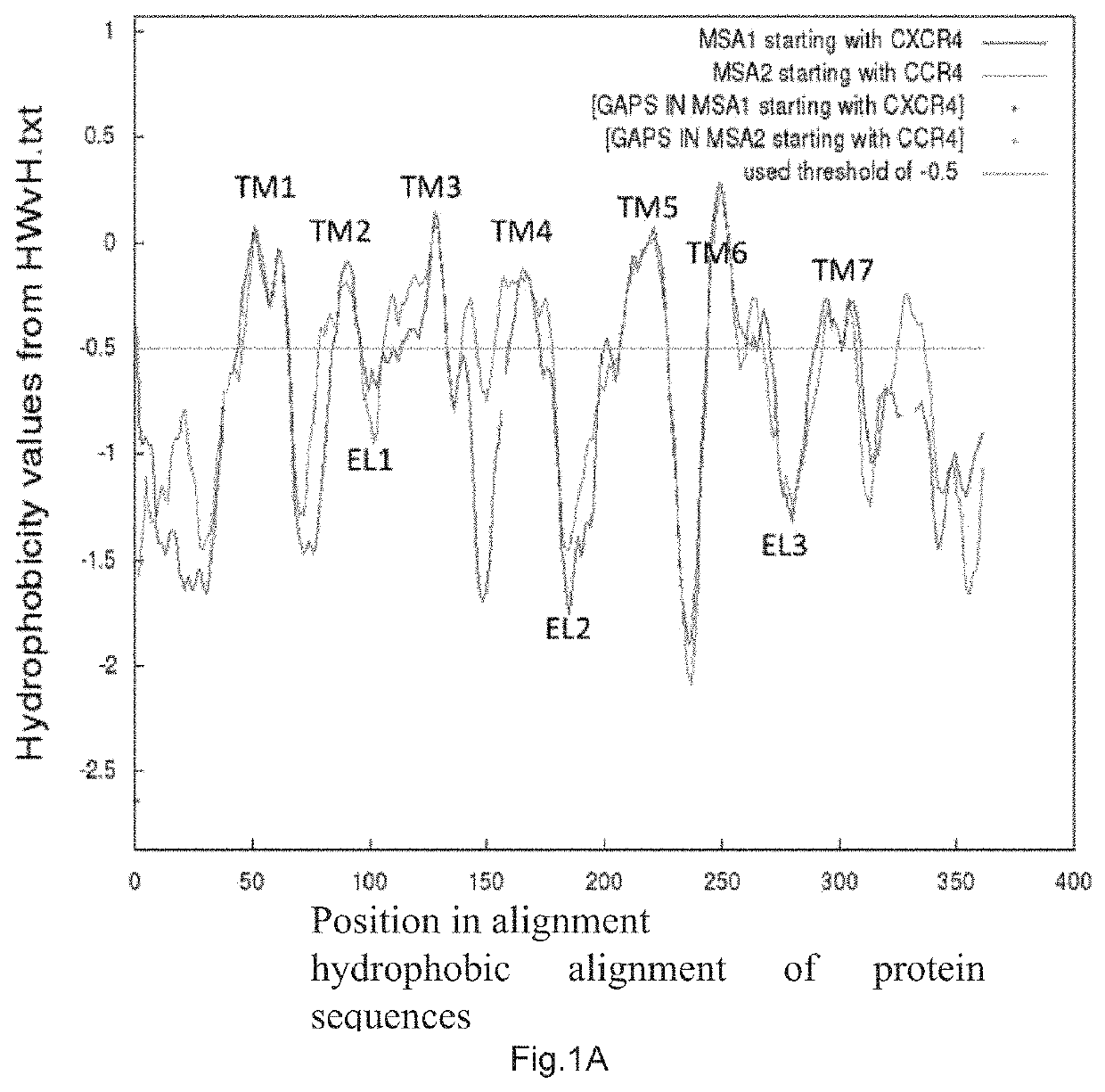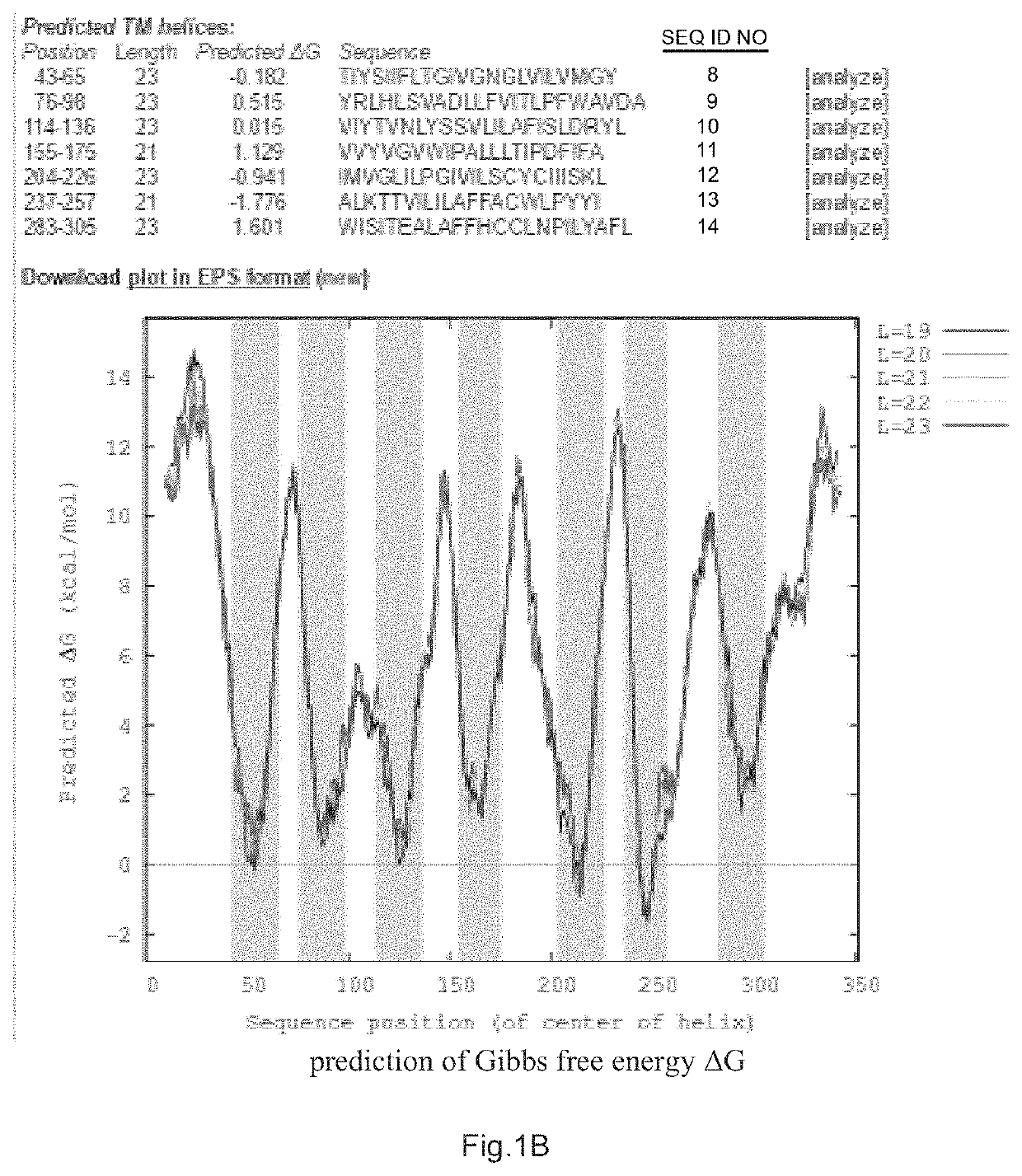N-terminal recombinant protein of CCR4 and use thereof
a technology ccr4, which is applied in the field of biomedicine, can solve the problems of not reporting on the use of n-terminal recombinant protein of ccr4 and derivative compounds thereof, recombinant protein antibodies and other derivatives or compositions alone or in combination with other compounds or compositions, and achieves significant inhibition of treg chemotaxis
- Summary
- Abstract
- Description
- Claims
- Application Information
AI Technical Summary
Benefits of technology
Problems solved by technology
Method used
Image
Examples
example 1
n of N-Terminal Protein N-CCR4 of CCR4
[0041]1. The N-terminal protein N-CCR4 of CCR4 was predicted by hydrophobic alignment of CCR4 to CXCR4 protein sequence (located on the World-Wide Web at bioinfo.mpg.de / AlignMe / AlignMe_MSA.html) and by calculation of Gibbs free energy AG of CCR4 protein sequence (ΔG predictor sever v1.0, located on the internet at: dgpred.cbr.su.se) (FIG. 1A, B).
[0042]The sequence of N-CCR4 protein is:
[0043]
(SEQ ID NO. 1)MNPTDIADTTLDESIYSNYYLYESIPKPCTKEGIKAFGELFLPPLYS
[0044]2. Purification of N-CCR4 Derived Protein (N-CCR4)3
[0045]The codon-optimized sequence of (N-CCR4)3 DNA was cloned into pET22b(+) vector (Novagen, Cat. number 69744-3) via Ndel and BamHI cleavage sites, and transformed into Transetta competent cells (TransGen, Cat. number CD801-01). The culture broth shaken overnight was inoculated into a new LB medium at a ratio of 1:100, and when the OD600 of the culture broth was 0.6, IPTG (amresco, cat: 0487-1G) with a final concentration of 1 mM was added...
PUM
| Property | Measurement | Unit |
|---|---|---|
| volumes | aaaaa | aaaaa |
| volume | aaaaa | aaaaa |
| pharmaceutical composition | aaaaa | aaaaa |
Abstract
Description
Claims
Application Information
 Login to View More
Login to View More - R&D
- Intellectual Property
- Life Sciences
- Materials
- Tech Scout
- Unparalleled Data Quality
- Higher Quality Content
- 60% Fewer Hallucinations
Browse by: Latest US Patents, China's latest patents, Technical Efficacy Thesaurus, Application Domain, Technology Topic, Popular Technical Reports.
© 2025 PatSnap. All rights reserved.Legal|Privacy policy|Modern Slavery Act Transparency Statement|Sitemap|About US| Contact US: help@patsnap.com



